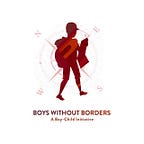Let's Talk About It: The Sexual Abuse of the Boy-child (Part 1)
In the eyes of the average man, 'sexual abuse' as a term was created for a single gender. It rarely extends to accommodate male victims. We live in a society that has turned its back towards the slightest of all inklings that the boy-child or male gender can be a victim of sexual harassment. Today, in the world we find ourselves, stories of sexual abuse towards the male gender exist but go under the radar because the society has labelled the male gender as the perpetrator and not the victim. But these stories are very much real, real experiences lived by real people. The boy-child too is susceptible to sexual harassment, this is without any iota of doubt. The questions that leads to are these; How can we know? Can we prevent these horror tales from ever occurring? How do we address it?
Boy-child sexual abuse describes assaults on a male who is legally unable to make his own decisions. The abuse is carried out by exploiting the boy's vulnerability. Common tactics for perpetrators include threats, gifts, force, and other methods to subdue the victim. About 1 in 5 male child fall victim to sexual abuse according to an article on children’s right by the council of Europe portal. Cases are underreported and attract little or no attention when they are. This means addressing this situation is of topmost important to enact a real change in the world because as the saying goes “the earlier, the better”.
Sadly, in terms of communication, victims prefer to stay silent to protect their masculinity, and therein lies the problem. Boys, in a bid to keep up with societal stereotype of simply being ‘boys’ fail to speak up on issues directly affecting them sexually, which on the long run could turn into assault. Pitifully, the boy-child does not even realised he is raped. How then can we know when a boy-child has been abused sexually? What are the markers? Where lies the signs of assault? Below are some signs of sexual assaults.
Problems at school – an abused child may have difficulty concentrating and learning, and their grades may start to drop.
Physical problems – the boy may develop health problems, including soreness in the genital and anal areas or sexually transmitted infections.
Sexually inappropriate behaviour – children who have been abused may behave in sexually inappropriate ways or use sexually explicit language or start replicating what the abuser does to him on others
Avoiding the abuser – the boy may dislike or seem afraid of a particular person and try to avoid spending time alone with them. Reverse can also be the case as the child might develop excessive attachment to the abuser.
Changes in behavior – a child may start being aggressive, withdrawn, clingy, have difficulties sleeping, have regular nightmares or start wetting the bed.
Sudden Withdrawal - The boy child is seen to want to be by himself most times. He is quieter, more distant and secretive.
Posture difference - Younger boys are seen to sit, stand or walk differently with difficulty after such experience.
Weakened socialization - The boy child is observed to have trouble developing or maintaining relationships.
Eating disorder - The boy child suddenly develops a drastic increase or decrease in appetite or an outright refusal to eat. They may also have difficulty in swallowing.
Excessive knowledge of sexual topics - The boy child is seen to often seek out ways to spark up sexual conversations or use sexually explicit language. They may also exhibit adult-like sexual behaviours mimicking them with toys or other objects.
Constant fear - The boy child is observed to be constantly frightened or worried. The fear of intimacy and closeness also creeps in.
Diminished self-image - The boy child suddenly exhibits poor self-esteem and starts to find his body repulsive, dirty or bad. This sometimes leads to self-mutilation.
Subtle clues - The boy child is seen to give clues that hint on his sexual abuse experience by some questions he might ask like, "Is it good to keep secrets?”
Fear of occasions of nudity - The boy child is observed to avoid or resist moments where any form of nudity for him is involved but appropriate, like bath time, bed time or toilet time.
The question we then must ask ourselves is how we are to address this menace that has plague our society? How do we curb it?
In a more practical way of addressing the issues of sexual abuse against the male child, 2 wide paths are prescribed;
1. The preventive measures: This is the most effective way to prevent and limit sexual abuse against the boy child. This whole movement help against the risk of abuse against the boy child
2. The aftermath measures: This measure encompass a variety of intervention that will be undertake both by the abused fellow and others in other to help the boy child to recover from this traumatic experience.
These measures will be covered in more detail in the next publication of Breaking Borders.
